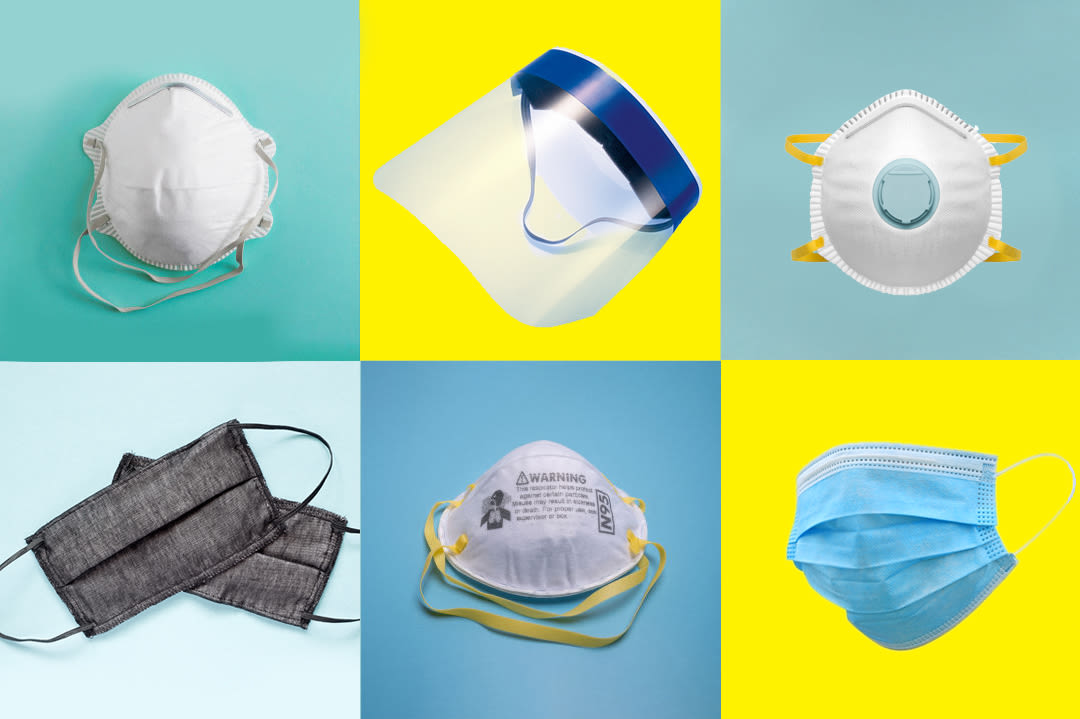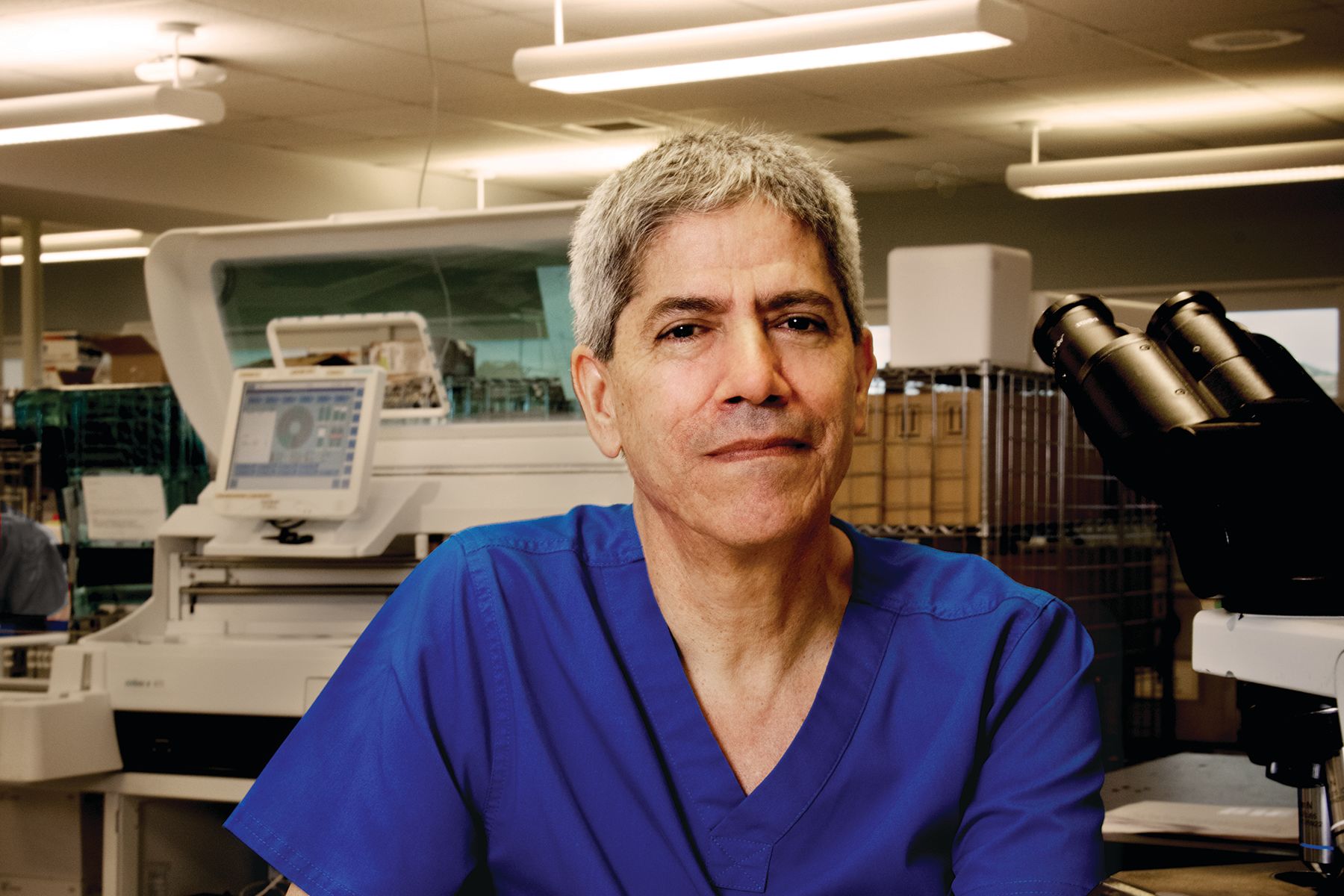Know Thy Masks: A Primer to Face Covers

Clockwise from top left: R95, face shield, N95 surgical mask, dust mask, homemade cloth mask.
Image: Shutterstock
Like any crisis that marries niche knowledge with dire consequences, the coronavirus pandemic has forced us to absorb a new vocabulary at a breakneck speed. Incubation period? Asymptomatic? Immunocompromised? All medical buzzwords now embedded in our cultural lexicon. But lately, a new genre of coronavirus jargon has us scrambling to keep up: mask descriptors.
It’s not a trivial pursuit. Knowing the difference between a surgical and cloth face covering may very well help protect our essential workers and cut down on some unnecessary sidewalk shaming. So, choose your face covering wisely.
N95 respirators
You’ve probably heard of these guys by now. Aided by edges designed to seal around the nose and mouth, they’re the best facial defense against the virus because they block 95 percent (get it?) of particles as tiny as 0.3 microns. But they’re difficult to breathe through, and hospitals and other essential businesses desperately need them, so please leave these to the professionals. Ultimately, their health is good for your health.
Other types of respirators
They don’t get as much pub, but R95s and P99s and N99s are all National Institute for Occupational Safety and Health (NIOSH)-approved respirators that protect their users by removing particles from the air their users are breathing. Many of them feature a face shield and dual nozzles for filters and cartridges, so they’re not only effective virus deterrents but also a great way to scare off nosy neighbors.
Surgical masks
You may have always wanted to be a doctor, but now’s not the time to play dress up. Like N95s, this ER wear should be reserved for our frontline workers. With a loose fit, these medical face coverings aren’t designed to keep out smaller particles like N95s, but their regulated nonwoven fabric exteriors do block larger germs from entering their wearers’ mouths and noses. Their light-blue hue and creased centers (mouthlike, if you squint enough) distinguish them from most rectangular cloth creations.
Dust masks
These have always been handy on the job, safeguarding construction workers and others from mild airborne irritants, and now they’re increasingly seen off it. But beware: A virus isn’t sawdust. At least one study found that bandanas were more effective at preventing harmful aerosols’ entry, and the NIOSH hasn’t certified them.
Gas masks
Only if you’ve got one laying around. Do they protect you? Sure. Do they out you as an attention hog? Uh-huh. Opt for a respirator instead (no bug eyes!) if you want to look like you’re taking this oh-so-seriously.
Maker Mask
The techie’s choice. These 3D-printed respirators recently received federal approval, and their aesthetic evokes Apple more than Contagion.
Face shields
Picture the brim of a visor bent downward. Now, imagine that brim was clear. They’re rigid blockades, but they’re not worn tight enough around the face to be considered a top option.
Homemade masks
While the CDC recommends wearing a multilayered cloth face covering, it also touts the use of household items, which has led to some rather liberal interpretations of the word mask in this city. Beyond the standard DIY picks like bandanas and scarves, air filters, mascot heads, Halloween costumes, and, yes, even Easter bunny getups have been disposed to battle this pandemic. Research on these items’ efficacy is lacking, but don’t call it an oversight; even medical experts can’t be expected to anticipate our ingenuity.
This piece originally appeared on our sister publication Seattle Met’s website. To read Benjamin’s original article, click here.



